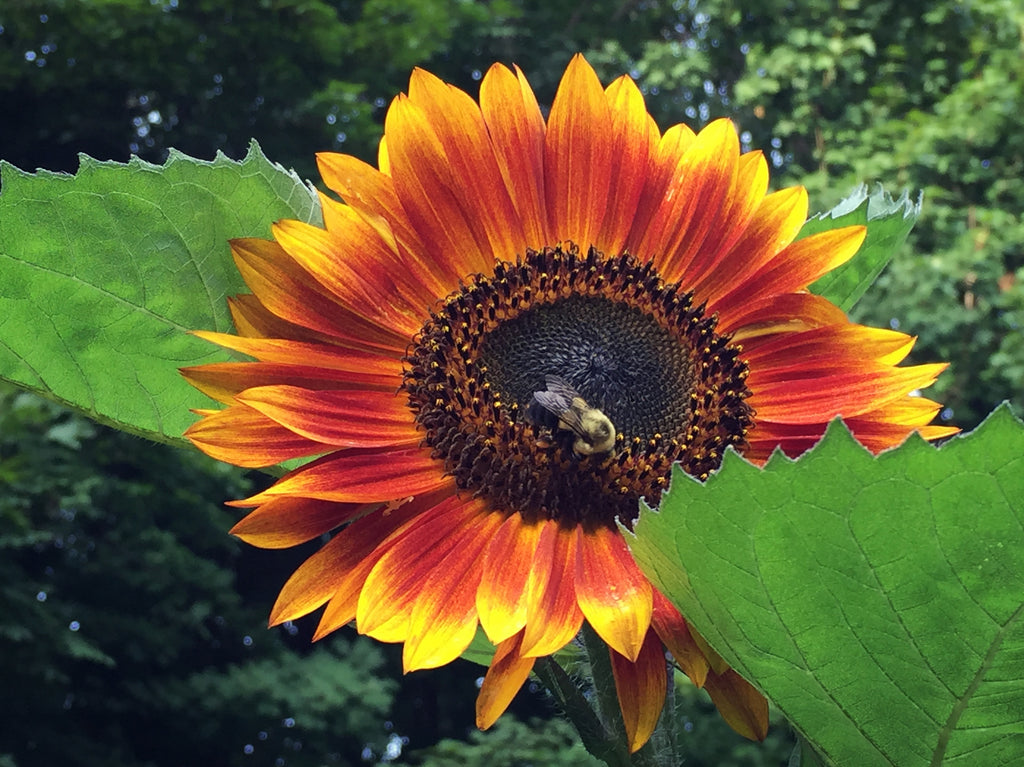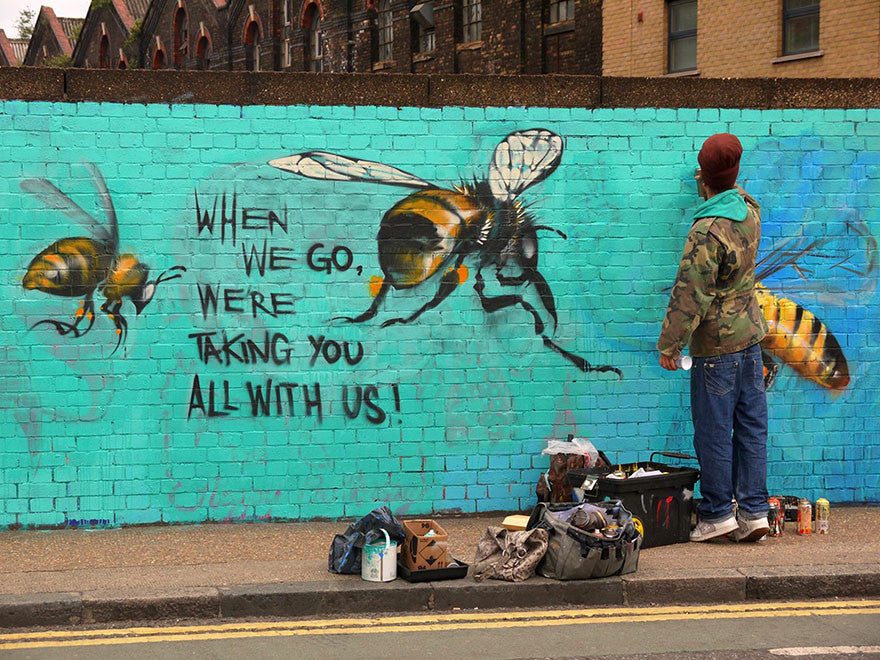News
7 Ways You Can Help Save the Bees
-
Ask Congress to pass critical protections for pollinators. Toxic pesticides called neonicotinoids, or “neonics” are killing bees and putting our food supply at risk ― as everything from fruits and vegetables to nuts and seeds depend on bee pollination. American beekeepers reported an estimated loss of 44% of their hives last year. We must urge our representatives to put an end to this crisis. Tell Congress to pass the Saving America's Pollinators Act or simply email your representatives in just a few easy steps at Democracy.IO
-
Let the dandelions be! As a weed, it’s one of the most unpopular of the bunch, but hold back on the mowing and weed killers and you’ll find a whole range of pollinators depends on them for food. The dandelion is unrelenting, but that is what makes it so brilliant. Its peak flowering time is from late March to May, when many bees and other pollinators emerge from hibernation. Because it can be found virtually everywhere and is nearly always in flower, dandelions are a bumblebee’s best friend.
-
Fill your garden or planter pots with native wildflowers. Add some color to your life while providing healthy food for the bees! Plant single flower tops such as daisies or marigolds rather than double flower tops (double headed flowers produce much less nectar and make it much more difficult for bees to access pollen). Try at least three different types of flowers to ensure blooms all season long, providing bees with a constant source of food. Also be sure to select native, non-invasive wildflower species and be mindful of where they were sourced from (avoid big box stores). Try this >> Bee Feed Flower Mix << from Seed Savers Exchange.
-
Create a bee bath for thirsty travelers. After a busy day’s work, bees need a place to get fresh clean water too! Fill a shallow container of water with pebbles or twigs for the bees to land on while drinking. Make sure to maintain the container full of fresh water to ensure that they know they can return to the same spot every day.
-
Submit your bumblebee sightings for research. Bumble Bee Watch is a collaborative effort to track and conserve North America’s bumblebees. Because these animals are widely distributed the best way to keep track of them is with an army of volunteers across the country armed with cameras. With any luck, you can help to find remnant populations of rare species before they go extinct. Here’s how you can get involved:
-
Upload photos of bumblebees to start a virtual bumblebee collection
-
Identify the bumble bees in your photos and have your identifications verified by experts
-
Help locate rare or endangered populations of bumblebees
-
Help researchers determine the status and conservation needs of bumblebees
-
Learn about bumble bees, their ecology, and ongoing conservation efforts
-
Look into keeping your own beehive. With our honeybee population in serious decline, the art of beekeeping has become more important than ever. Beehives require management and good stewardship, which take both time and knowledge. The first step to becoming a successful beekeeper is to learn as much as you can about the bees themselves. Check out these resources to find out if beekeeping might be right for you!
_____________________________________________________________________________________________________________________________________
 Britt Ricci - Northern Wisconsin - https://wiwolvesandwildlife.org/
Britt Ricci - Northern Wisconsin - https://wiwolvesandwildlife.org/
Graduate of geography and environmental studies from UW-Madison with a focus in predator-human relationships.
Hive Designer Jacob Krump Featured in the UMD Statesman
Jacob Krump: An artist on the way to success
Check it out!
Buzzkill: Where Have All The Bumblebees Gone?
For the first time, bumblebees have officially been declared endangered. The disappearing rusty patched bumble bee now remains in just 13 states, down from 28. Causes of the decline of bumblebee populations are believed to be loss of habitat due to urbanization and agriculture, disease and parasites, the use of pesticides that directly or indirectly kill bees, and climate change which is affecting availability of flowers they depend on.
How do pesticides harm the bees?
Honey bees collect nectar and pollen and carry it to their hives to provide food for their colony throughout the winter. When pesticides are applied to crops, the pollen and nectar carried back to the hive becomes contaminated. As a result, pesticides applied to crops or lawns one season can affect the health of the bees the following winter when they are consuming the contaminated honey and pollen.
A recent study found the pollen bees collected in agricultural fields and brought back to their hives was contaminated with 35 different pesticides. Pesticide-contaminated pollen also reduces the ability of healthy bees to fend off parasites that cause them to starve to death.
Many studies have found that insecticides and fungicides harm bees. Nearly all field corn and soybeans planted in the Midwest are treated with neonicotinoids, along with a mixture of fungicides (chlorothalonil and pyraclostrobin) which can disrupt their nervous systems causing them to forage less and produce fewer offspring.
Since the late 1990s, the population of the species has plummeted by a staggering 90%. In response to the dramatic population decline over the past 20 years, the US Fish & Wildlife Service has officially placed the rusty patched bumblebee on the Endangered Species List.
Why is this important?
Pollinators are small but mighty parts of the natural mechanism that sustains us and our world. Without them, our farms, gardens, parks, forests and the abundant life they support, cannot survive.
Pollinators like the rusty patched bumble bee also play an essential role in maintaining the food supply, with bees in the US pollinating more than 90 commercial crops including fruits, vegetables, nuts and seeds. Protecting the bees is not only essential for our ecosystems, but for our entire food supply.
If bees go extinct, it’s simple: no bees = no food!
The Endangered Species Act has protected more than 1,000 species since it became law in 1973 in efforts to ground a cornerstone of science that says the healthiest, most stable natural systems tend to be those with high levels of biodiversity. Granting federal protection is the best — and probably last — hope for the recovery of the rusty patched bumblebee.
_____________________________________________________________________________________________________________________________________
 Britt Ricci - Northern Wisconsin - https://wiwolvesandwildlife.org/
Britt Ricci - Northern Wisconsin - https://wiwolvesandwildlife.org/
Graduate of geography and environmental studies from UW-Madison with a focus in predator-human relationships.
The Great Minnesota Get Together!
First off, we can't thank 3rd Lair enough for the opportunity of displaying our clothes to all of Minnesota for the duration of the state fair. We wouldn't have the exposure that we do without our clothes in their booth and available to the skate community for the last 2 years. The displays look fresh, and all of our new organic apparel is there, as well as our entire 2015 collection. The Hive crew would really appreciate if you stopped by the booth, grabbed some apparel and watched skaters mob around the park. Many of you are from our hometown, and it means a lot when we see y'all with our clothes on, it reminds us that you guys are the homies that got us started. Stay local, buy local, support the bees, and enjoy the fair!
~Kevin Yantes







